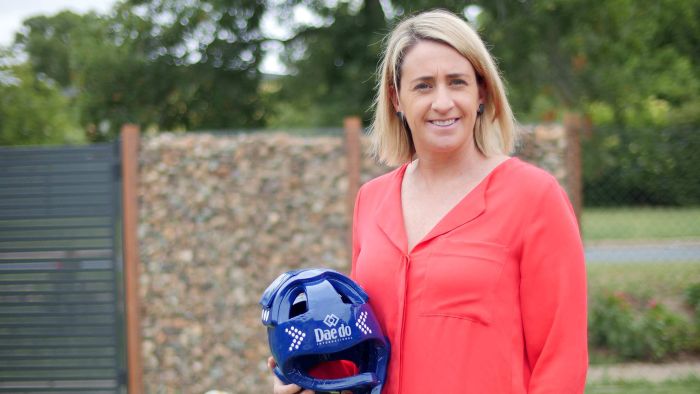Tokyo is just around the corner but the most ferocious contest in Australian sport is set to follow the Olympics, when the Government decides how it hands out funding.
Key points:
- One of Australia’s most capped footballers wants the Government to prioritise grassroots funding over money for elite athletes
- The Government gives more than $100 million each year to sporting organisations, most of it focused on high performance
- Sailing, rowing, hockey and paddle sports receive millions in funding although they have relatively few participants
Football Australia (FA) chief executive James Johnson has said the high performance funding model “didn’t work” for the high-profile Matildas, and now one of the Matildas greats — and new chief executive of Australian Taekwondo — has also called for the funding model to be “turned on its head”.
A footballer capped 130 times for Australia, a former W-League coach and now a forthright voice in sports administration, Heather Garriock believes “without grassroots and community you don’t get greatness,” but that’s not everything in sport.
“Not every young boy or girl wants to be a superstar or an Olympian, so we need to be able to nurture them and show them the beauty of what sport brings,” she said.
Sporting bodies are funded in a variety of ways: by participants paying to play, by broadcasters paying for the rights to show matches, by fans going to games and buying merchandise.
High-profile sports such as rugby league and Australian rules football tend to be more reliant on commercial revenue. There, the pandemic brought cuts to women’s competitions and teams.
Many sports rely on taxpayer funding, especially Olympic sports that don’t offer high profile leagues like football or basketball.
Right now, the Federal Government spends more than $100 million on sport each year and has extended its funding pledge until the end of next year.
Ms Garriock called for a “matrix” to be established, factoring in medal chances as well as the potential rewards for investing in participation and community sport.
“That’s where young kids, boys and girls, fall in love with the game, or fall in love with the sport,” she said.
“That’s where we need to spend more of our money, as opposed to the high-performance side of things, because that’s basically a by-product.”
Football boss sparks debate
In November at the Football Writers’ Festival, FA chief executive James Johnson said that the existing high-performance funding model “doesn’t work” for the Matildas.
“If the Matildas even got a medal in the Women’s World Cup, we know how much impact that would have on this whole country,” he said.
“I ask you to think about that versus a gold medal in one of these other sports, and my personal view is that whole model needs to change,” he said.
His comments triggered consternation from some in the sports community.
Right now the Government disperses high performance funding based on performance criteria such as a “high probability” to win a gold medal at the next two Olympics.
Sailing and swimming are the highest-rated sports in the most recent ranking period and women’s football is on the fourth funding tier for Olympic sports alongside gymnastics, taekwondo and baseball.
Matt Carroll, chief executive of the Australian Olympic Committee (AOC), agreed, “you can’t measure each individual sport the same.”
“If an Australian male or female made the 100-metre sprint final in athletics, that in itself is a gold medal in other sports.”
Shift towards participation




Since taking charge in taekwondo, Ms Garriock has set her sights on harnessing taekwondo’s grassroots and establish financial certainty for an organisation that relies on government for about three quarters of its funding.
“The long-term vision is to be able to be sustainable as an organisation without that government funding,” she said.
A funding shift towards participation from high performance could penalise taekwondo, but Mr Garriock is optimistic.
She believes the 40,000 participants identified in national survey AusPlay is an undercount, and the number of people involved in taekwondo is closer to a quarter of a million.
Mr Carroll argues sports need funding certainty of four-year funding cycles, and wants the Government’s approach to reflect that.




“Funding shouldn’t be a ‘freebie’. Sports should create have to draft their business plan, both for their performance and pathway, then be given to justify a four-year investment allocation,” he said.
“Sports are like any business … you can’t grow a business if you only have investment on a year by year.”
“That certainty over four years will allow sports to get a project up and seek a corporate sponsor.”
He said the AOC was planning to present its new model for funding to the Government as part of preparations for the Intergenerational Report which will be released in the middle of 2021.







